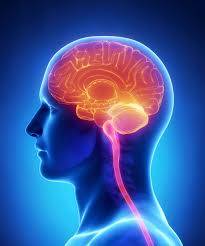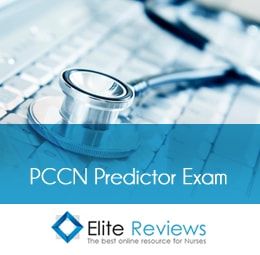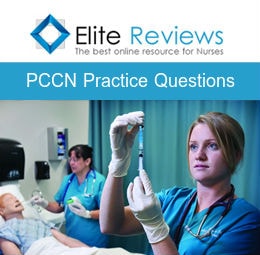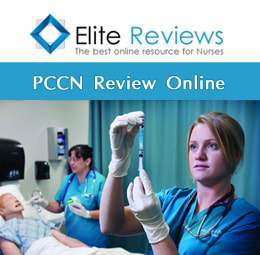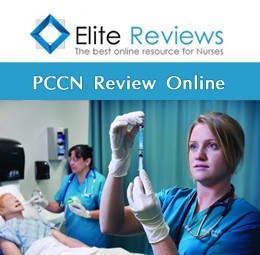PCCN Exam AV Malformation
PCCN Exam AV Malformation
A brain arteriovenous malformation (AVM) is a tangle of abnormal blood vessels connecting arteries and veins in the brain. The arteries are responsible for taking oxygen rich blood from the heart to the brain. Veins carry the oxygen depleted blood back to the lungs and heart. A brain AVM disrupts this vital process. An AVM can develop anywhere in your body but occurs most often in the brain or spine. Even so, brain AVM’s are rare and affect less than 1% of the population. Some of the causes of brain AVM is unknown, but researchers believe most brain AVMs emerge during fetal development.
A brain AVM may not cause any signs or symptoms until the AVM ruptures, resulting in bleeding in the brain (hemorrhage). In about half of all brain AVMs, hemorrhage is the first sign. Some of the signs and symptoms are listed below…
- Seizures
- Headache
- Muscle weakness or numbness in one part of the body
- Vision loss
- Difficulty speaking
- Confusion
- Severe unsteadiness
Risk Factors for AVM
Anyone can be born with a brain AVM, but these risk factors may include
- Males – AVM’s are more common in males
- Family history
Complications
- Bleeding in the brain (hemorrhage)
- Reduced oxygen to brain tissue
- Thin or weak blood vessels
- Brain damage
Diagnosis
- Cerebral arteriography
- CT scan of the head
- MRI of the brain
Treatment
- Surgical removal (resection)
- Endovascular embolization
- Stereotactic Radiosurgery (SRS)
PCCN Exam – Practice Questions
1) A patient with a traumatic brain injury (TBI) has just been admitted after resuscitation in the emergency room department. Which of the following initial studies should the nurse anticipate in this patient?
A) Magnetic resonance imaging (MRI) of the brain
B) Computed tomography (CT) scan of the head
C) Lumbar puncture (LP)
D) Cerebral angiography
2) A patient presents with new-onset seizures. Diagnostic imaging reveals a 4 cm right posterior frontal arteriovenous malformation. In planning this patient’s nursing care needs, which of the following conditions should the nurse anticipate?
A) Left-sided weakness
B) Receptive aphasia
C) Left homonymous hemianopsia
D) Sensory deficits on the right face and arm
3) A patient admitted last night with subarachnoid hemorrhage returned from the operating room 4 hours ago following aneurysm clipping. On admission, the patient was assessed as a Hunt and Hess Grade II. The patient now appears to be stuporous with significant left hemiparesis. The nurse should
A) Note that this is consistent with the Hunt and Hess appraisal at admission
B) Contact the neurosurgeon to communicate the examination findings
C) Adjust IV infusion rate because the aneurysm may have rebleed
D) Prepare for ventriculostomy insertion by the physician so hydrocephalus can be treated.
4) During report, the nurse is told that a patient with an intracranial hemorrhage has GCS values of 3 – 3 – 4. Evaluation of the patient’s progress is based on the nurse’s knowledge that this patient
A) Opens his eyes when spoke to
B) Follows simple commands
C) Makes no attempt to remove noxious stimuli
D) Makes no attempt to vocalize
5) A 25 y/o admitted patient has a generalized tonic clonic seizure. After the seizure has subsided, the nurse expects the patient to exhibit which of the following as a characteristic behavior after a seizure?
A) Restlessness
B) Lethargy
C) Automatisms
D) Incontinence
PCCN Practice Questions Answer with Rationale
1) Correct Answer – B) Computed tomography (CT) scan of the head
- Rationale – CT scan of the head is useful for looking at bone and blood and is the best imaging study to view most intracranial processes, including trauma, intracerebral hemorrhage, and hydrocephalus.
2) Correct Answer – A) Left-sided weakness
- Rationale – The location of the AVM suggests which deficit the nurse needs to anticipate. A lesion in the right frontal area would be expected to affect voluntary motor control on the left side of the body. Comprehension of spoken language.
3) Correct Answer – B) Contact the neurosurgeon to communicate the examination findings
- Rationale – The patient is now a Hunt and Hess Grade IV, a substantial deterioration compared to the initial Grade II (Grades range from I to V, with Grade I identifying alert patients with mild headache and stiff neck and Grade V identifying patients in coma. The most appropriate action would be to notify the neurosurgeon, who may request a head CT scan or angiography.
4) Correct Answer – A) Opens his eyes when spoke to
- Rationale – The GCS is an internationally recognized standardized assessment tool that evaluates level of consciousness, the most sensitive indicator of cerebral function. The patient’s best responses in three areas, eye opening, motor response, and verbal response.
5) Correct Answer – B) Lethargy
- Rationale – Typical postictal behavior includes confusion, lethargy, HA, and somnolence. The patient will usually sleep for an extended period following a seizure.
PCCN National Exam Courses
Overview
- Elite Reviews Offers A Variety Of Online Courses That Will More Than Adequately Help Prepare The Critical Care Nurse To Pass The National Exam.
- Each Course Includes Continuing Education Credit and Sample Questions.
Continuing Education
- Each Of Our Online Courses Has Been Approved Continuing Education Contact Hours by the California Board of Nursing
- Login To Your Account In Order To Access The Course Completion Certificate Once The Course Is Complete.
PCCN Free Trial
- FREE Sample Lecture & Practice Questions
- Available For 24 Hrs After Registration
- Click The Free Trial Link To Get Started – PCCN Free Trial
How It Works
How The Course Works
- First – Purchase The Course By Clicking On The Blue Add To Cart Button – You Will Then Be Prompted To Create A User Account.
- Second – After Creating An Account, All 3 Options (90, 120 or 150 Days) Will Be Listed. Select The Option You Desire And Delete The Other Two.
- Third – You Will Be Prompted To Pay For The Review Using PayPal – After Payment You Will Be Redirected Back To Your Account.
- Last – Click The Start Button Located Within Your Account To Begin The Program
- 125 Prep Questions
- Q & A With Rationales
- Approved For 5 CEU’s
- 90 Days Availability
- Cost $75.00
- 1250+ Prep Questions
- Q & A With Rationales
- Approved For 25 CEU’s
- 90 Days Availability
- Cost $200.00
PCCN Practice Questions Bundle
- 1350+ Prep Questions
- Q & A With Rationales
- Approved For 30 CEU’s
- 90 Days Availability
- Cost $225.00
PCCN Review Course
- Option 1
- Lectures & 1250+ Questions
- Q & A With Rationales
- Approved For 35 CEU’s
- 90 Days Availability
- Cost $275.00
- Option 2
- Lectures & 2000+ Questions
- Q & A With Rationales
- Approved For 40 CEU’s
- 90 Days Availability
- Cost $325.00
PCCN Review Course Bundle
- Option 3
- Lectures & 3000+ Questions
- Q & A With Rationales
- Approved For 70 CEU’s
- 90 Days Availability
- Cost $375.00

